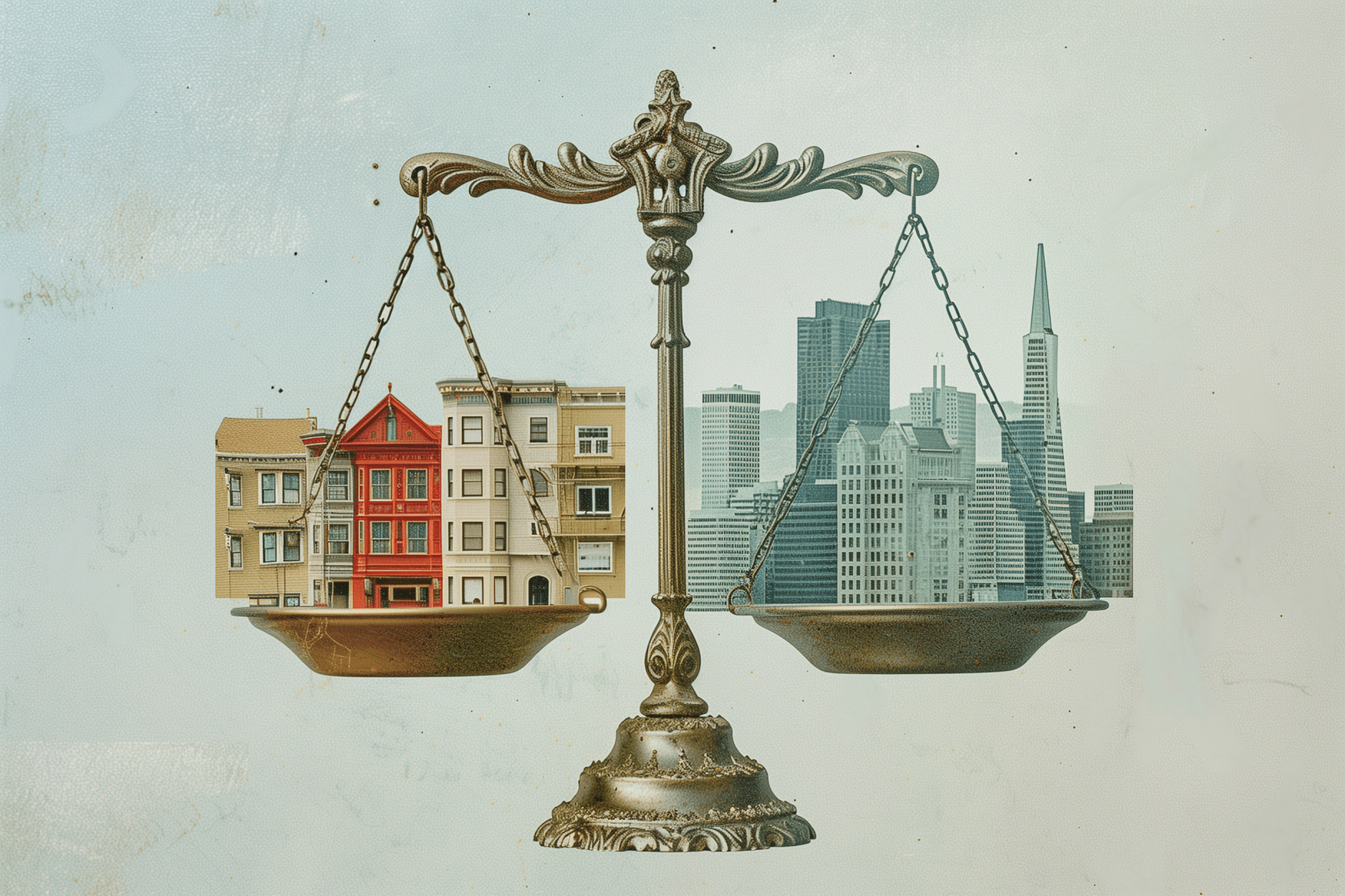YIMBYs are demonizing San Francisco residents and small businesses with labels like NIMBY. But such smears can't obscure the truth about the extreme housing policies of Mayor London Breed, state Sen. Scott Wiener and their allies.
Simply put, an “upzoning” plan to double height limits and disregard public input is radical and will not benefit the city's residents or small businesses. Rather, such moves would destroy our neighborhoods and displace the people and local businesses that make San Francisco special.
Last week, the mayor appeared to shelve the most radical elements of the upzoning plan in favor of a more targeted and nuanced approach that I and other neighbors and merchants have advocated. Despite the mayor’s clear about-face, the radical fringe YIMBY elements rushed to social media to call for an even bigger plan that demolishes existing buildings and expands the scope of the rezoning plan. Did they get the memo from Room 200 or do a temperature check of residents and merchants? Clearly not.
Many housing projects have stalled in San Francisco because of high interest rates and the mayor’s failure to make our streets and neighborhoods clean and safe. Instead of focusing on those issues, which are top of mind for many in San Francisco, YIMBYs are attempting to force their wrong-headed upzoning plans on the rest of us.
A top-down, one-size-fits-all approach to zoning undermines the vibrant character of our amazing neighborhoods. Extreme housing policies will backfire and hinder the decades-long progress made in developing housing that reutilizes and reimagines land—where appropriate—in the city. Hayes Valley, Dogpatch and District 3’s Polk Street and Van Ness corridors are amazing examples of rethinking our local landscape and creating spaces that contribute to our already thriving historic neighborhoods.
I identify with the many residents and merchants who are best described as SHIMBYs: Sensible Housing in My Backyard advocates. We reject polarization and name-calling. We demand pragmatism and dialogue so we can be both pro-neighborhood and pro-housing.
For instance, look at neighborhoods in my district, District 3. In the densest part of the city, along the Polk Street and Van Ness Avenue corridors, we have made significant progress in building more housing. I am intimately familiar with this area from my time as president of the Middle Polk Neighborhood Association and as a board member of Russian Hill Neighbors.
As SHIMBYs, both of those organizations fostered community-led planning, including welcoming new developments through community dialogue and input within existing height limits of up to six stories south of Broadway on Polk and between eight and 13 stories along Van Ness. New housing within these limits remains contextual with the neighborhood and integrates seamlessly with existing structures. Community members were empowered to provide valuable feedback on design features, street improvements, ground-floor retail and affordable housing placement—a process that fostered consensus among neighbors, businesses and developers.
Buildings reaching 18 stories on Polk Street and 30 stories on Van Ness Avenue—as advocated by some YIMBYs—do not align with the urban form of our city and historic neighborhoods. Such radical policies would not result in real housing; rather they would encourage ultra-luxury buildings that are increasingly likely to be purchased by overseas investors seeking a stake in San Francisco as they diversify their global assets.
Most troubling, the extreme urbanist model shows blatant disregard for our valuable stock of rent-controlled housing and the tenants who live in these buildings. Referring to these structures as "old" and advocating for their demolition is misguided and cruel.
Existing housing is the most affordable housing. Extreme upzoning policies will gentrify neighborhoods, putting renters and businesses at risk of displacement. This is a similar process to the redevelopment of the Fillmore and Japantown by the San Francisco Redevelopment Agency decades ago, a regrettable chapter in our city's history that should not be repeated.
What we truly need is a return to pragmatic, bottom-up neighborhood and community planning that respects existing height limits and fosters community consensus for new development. Hopefully, last week’s developments will get us there.
I've championed this approach in District 3 for the past decade and look forward to continuing to uplift the voices of neighbors and merchants in the years to come.
Let’s do the SHIMBY!
Moe Jamil is a deputy city attorney, Russian Hill Neighbors board member and a candidate for District 3 supervisor in November’s election. His comments are his own and do not represent the views of his employer.
